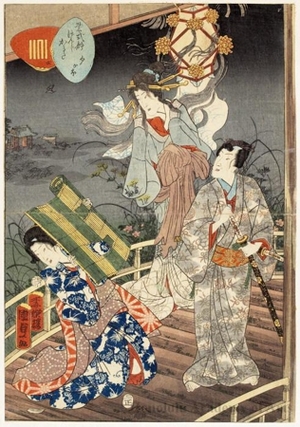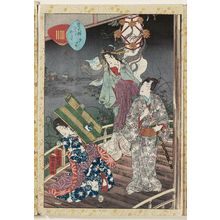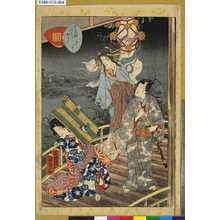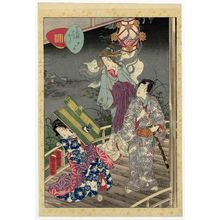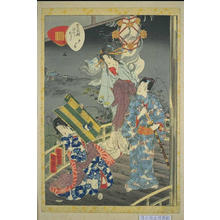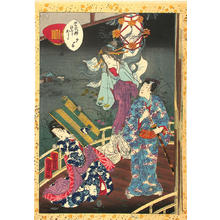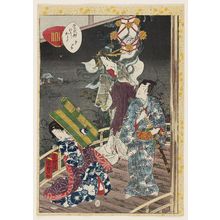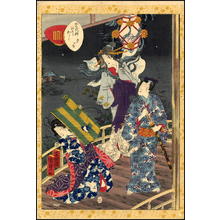Japanese Print "Chapetr 4: Yügao" by Utagawa Kunisada II
Artist:Utagawa Kunisada II
Title:Chapetr 4: Yügao
Date:1857
Details:More information...
Source:Honolulu Museum of Art
Browse all 5,476 prints...
Description:
This print depicts the ghost of Lady Rokujö from the fourth chapter of The Tale of Genji. In the story, Lady Rokujö's jealous spirit is rumored to have possessed and killed two of Genji's ladies; Yügao and Genji's first wife, Aoi. The early nineteenth century was the beginning of a decadent period. The eleventh Tokugawa Shögun Ienari (active 1787-1837) was uninterested in governing the country and spent his time pursuing pleasurable activities. As a result, the economy began to decline. The development of a monetary system caused many samurai to become impoverished. At the same time, some commoners began to attain wealth. As the mass Edo culture matured, jaded townspeople began to seek more novel and exciting pursuits. The Tempö Reforms were enacted in order to regulate and control the money flow to the commoners, which frequently resulted in exploitation of the townsmen and peasants. In the late Edo period (nineteenth century), many artists produced prints of ghosts and goblins. In such prints, the villain was usually punished by a ghost, or evil goblins were vanquished by heroes. Segments of the Edo population hungry for justice-such as impoverished samurai and exploited townspeople and peasants-favored this genre. (from Tale of Genji exhibition 1/11/06-) ALT TEXT This print was conserved with the support of the Robert F. Lange Foundation. This print is based on the Yügao chapter of the Heian classic The Tale of Genji (ca. 1008). The spirit of the late Lady Rokujö, shown at the top, still loves Prince Genji (right) and plans to kill his new lover, Yügao (left). In the original story, Lady Rokujö's spirit visits Genji in a dream and expresses her jealousy. Yügao dies in her sleep shortly after Genji awakens. In a contemporizing of the original tale, the print shows various Edo-period items and resembles a scene from a Kabuki play. The kimonos are too elaborate to be Heian-period clothing, and Genji holds two swords, marking him as a samurai rather than a court noble.
